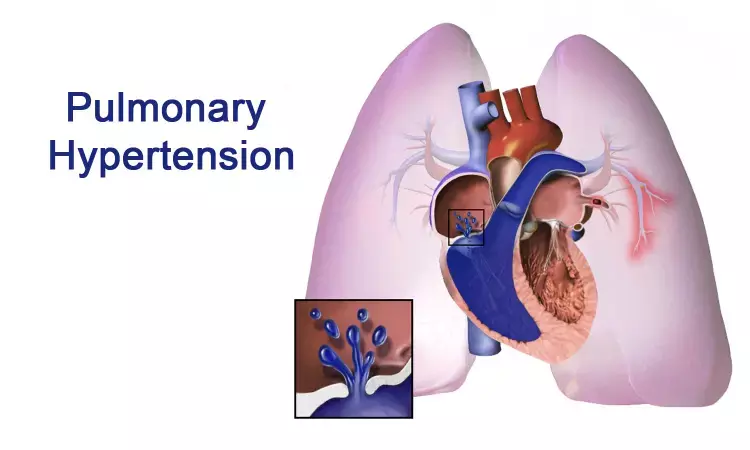- Home
- Medical news & Guidelines
- Anesthesiology
- Cardiology and CTVS
- Critical Care
- Dentistry
- Dermatology
- Diabetes and Endocrinology
- ENT
- Gastroenterology
- Medicine
- Nephrology
- Neurology
- Obstretics-Gynaecology
- Oncology
- Ophthalmology
- Orthopaedics
- Pediatrics-Neonatology
- Psychiatry
- Pulmonology
- Radiology
- Surgery
- Urology
- Laboratory Medicine
- Diet
- Nursing
- Paramedical
- Physiotherapy
- Health news
- Fact Check
- Bone Health Fact Check
- Brain Health Fact Check
- Cancer Related Fact Check
- Child Care Fact Check
- Dental and oral health fact check
- Diabetes and metabolic health fact check
- Diet and Nutrition Fact Check
- Eye and ENT Care Fact Check
- Fitness fact check
- Gut health fact check
- Heart health fact check
- Kidney health fact check
- Medical education fact check
- Men's health fact check
- Respiratory fact check
- Skin and hair care fact check
- Vaccine and Immunization fact check
- Women's health fact check
- AYUSH
- State News
- Andaman and Nicobar Islands
- Andhra Pradesh
- Arunachal Pradesh
- Assam
- Bihar
- Chandigarh
- Chattisgarh
- Dadra and Nagar Haveli
- Daman and Diu
- Delhi
- Goa
- Gujarat
- Haryana
- Himachal Pradesh
- Jammu & Kashmir
- Jharkhand
- Karnataka
- Kerala
- Ladakh
- Lakshadweep
- Madhya Pradesh
- Maharashtra
- Manipur
- Meghalaya
- Mizoram
- Nagaland
- Odisha
- Puducherry
- Punjab
- Rajasthan
- Sikkim
- Tamil Nadu
- Telangana
- Tripura
- Uttar Pradesh
- Uttrakhand
- West Bengal
- Medical Education
- Industry
Potts shunt effective in children with suprasystemic pulmonary hypertension, Study reveals

Researchers have recently found out that Potts shunt is an effective palliation for children with suprasystemic pulmonary hypertension that may become part of a strategy to maximize longevity and functional status for these challenging patients, according to the study published in the Journal of Thoracic and Cardiovascular Surgery.
For children with severe pulmonary hypertension, addition of Potts shunt to a comprehensive palliation strategy might improve the outcomes afforded by medications and delay lung transplantation.
Hence, Timothy S.Lancaster and associates from the Section of Pediatric Cardiothoracic Surgery, Washington University School of Medicine, St Louis Children's Hospital, St Louis, conducted the study to evaluate the midterm outcomes of the Potts shunt for pediatric pulmonary hypertension, with comparison to lung transplant.A prospective analysis was conducted of all children undergoing Potts shunt or bilateral lung transplant for pulmonary hypertension.A total of 23 children underwent Potts shunt (20 surgical, 3 transcatheter), and 31 children underwent lung transplant. All children with Potts shunt had suprasystemic right ventricle pressures despite maximal medical treatment. In the majority of patients, the Potts shunt was performed through a left thoracotomy approach (90%, 18/20), by direct anastomosis (65%, 13/20), and without the use of extracorporeal support (65%, 13/20).The results showed that –a. Perioperative outcomes after Potts shunt were superior to lung transplant including mechanical ventilation time (1.3 vs 10.2 days, P = .019), median hospital length of stay (9.8 vs 34 days, P = .012), and overall complication rate (35% [7/20] vs 81% [25/31], P = .003).b. Risk factors for operative mortality after Potts shunt (20%, 4/20; compared with 6%, 2/31 for lung transplant, P = .195) included preoperative extracorporeal membrane oxygenation and significant right ventricle dysfunction.c. In midterm follow-up (median 1.8, maximum 6.1 years), patients with Potts shunt had durable equalization of right ventricle/left ventricle pressures and improved functional status.d. There was no significant survival difference in patients with Potts shunt and patients with lung transplant (P = .258).Therefore, the authors concluded that "Potts shunt is an effective palliation for children with suprasystemic pulmonary hypertension that may become part of a strategy to maximize longevity and functional status for these challenging patients."
Dr. Nandita Mohan is a practicing pediatric dentist with more than 5 years of clinical work experience. Along with this, she is equally interested in keeping herself up to date about the latest developments in the field of medicine and dentistry which is the driving force for her to be in association with Medical Dialogues. She also has her name attached with many publications; both national and international. She has pursued her BDS from Rajiv Gandhi University of Health Sciences, Bangalore and later went to enter her dream specialty (MDS) in the Department of Pedodontics and Preventive Dentistry from Pt. B.D. Sharma University of Health Sciences. Through all the years of experience, her core interest in learning something new has never stopped. She can be contacted at editorial@medicaldialogues.in. Contact no. 011-43720751
Dr Kamal Kant Kohli-MBBS, DTCD- a chest specialist with more than 30 years of practice and a flair for writing clinical articles, Dr Kamal Kant Kohli joined Medical Dialogues as a Chief Editor of Medical News. Besides writing articles, as an editor, he proofreads and verifies all the medical content published on Medical Dialogues including those coming from journals, studies,medical conferences,guidelines etc. Email: drkohli@medicaldialogues.in. Contact no. 011-43720751


